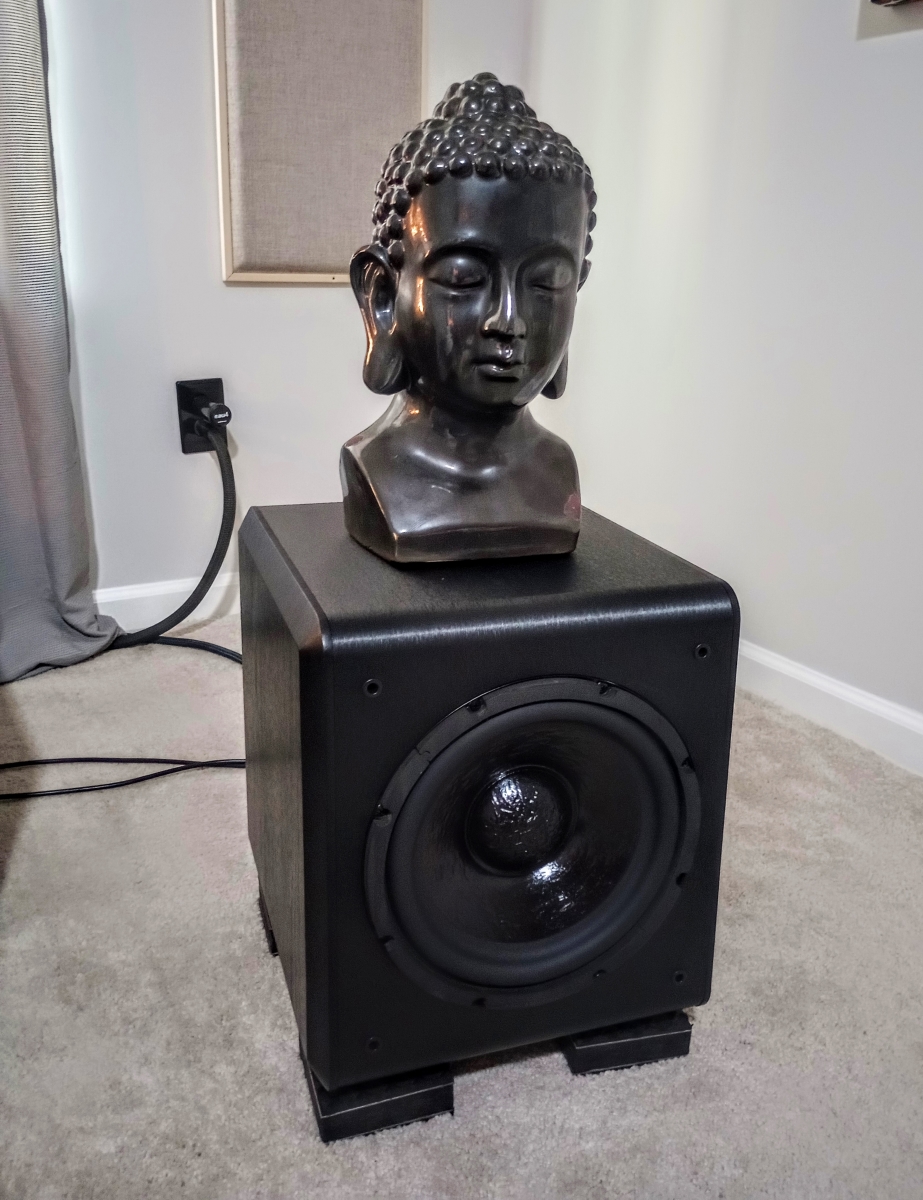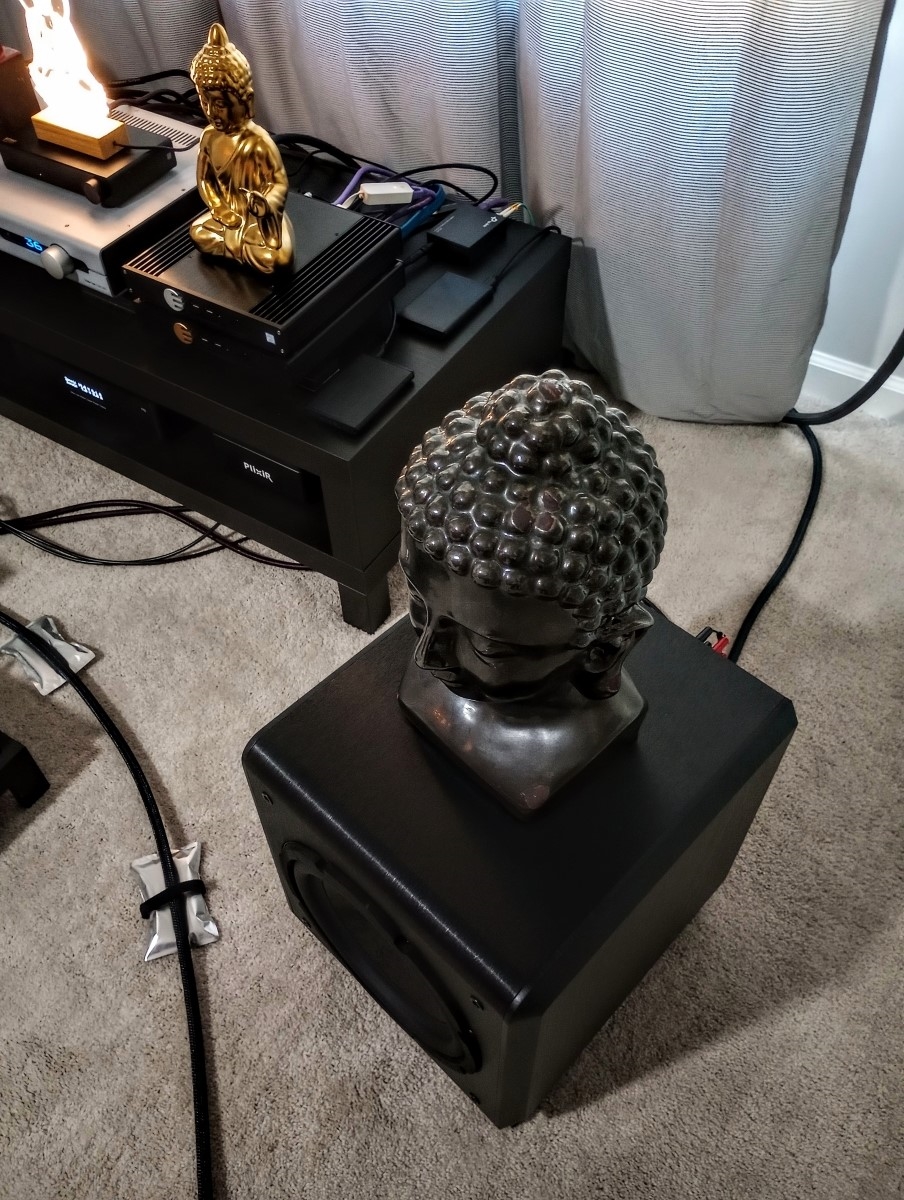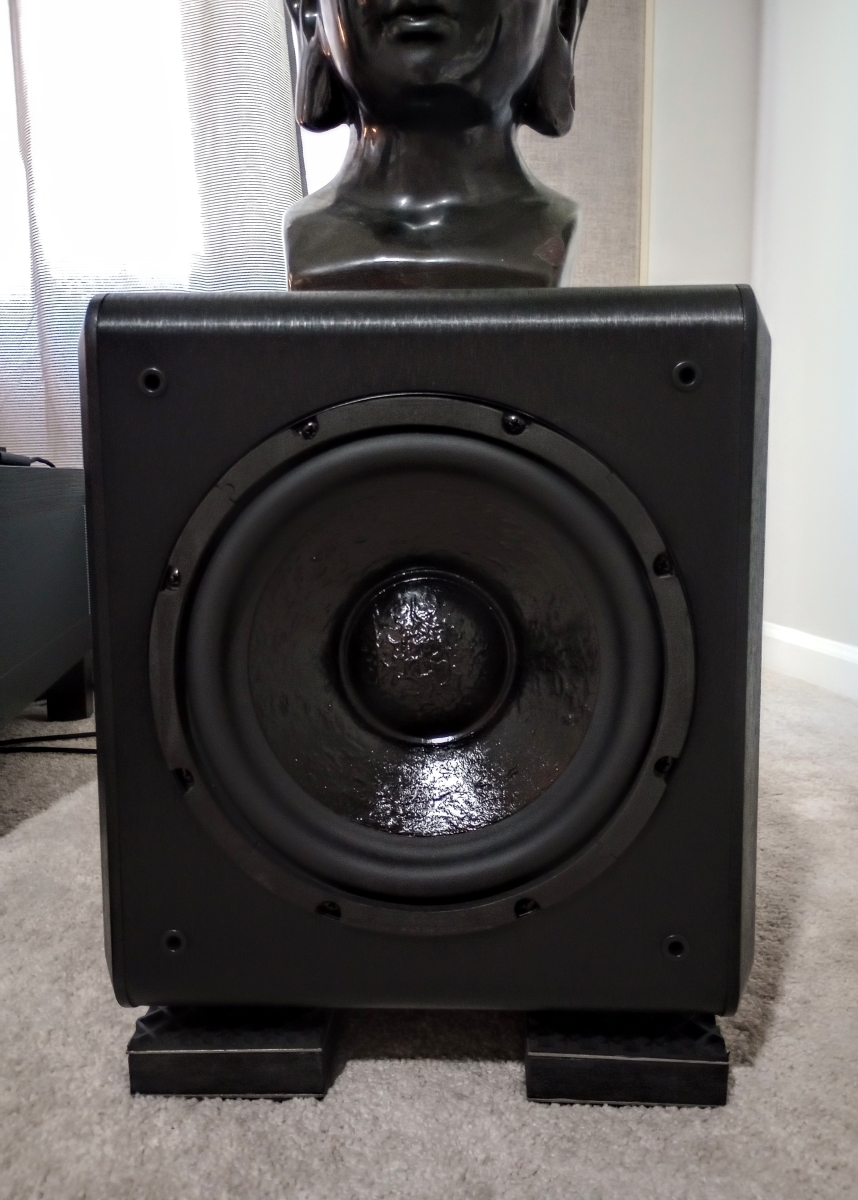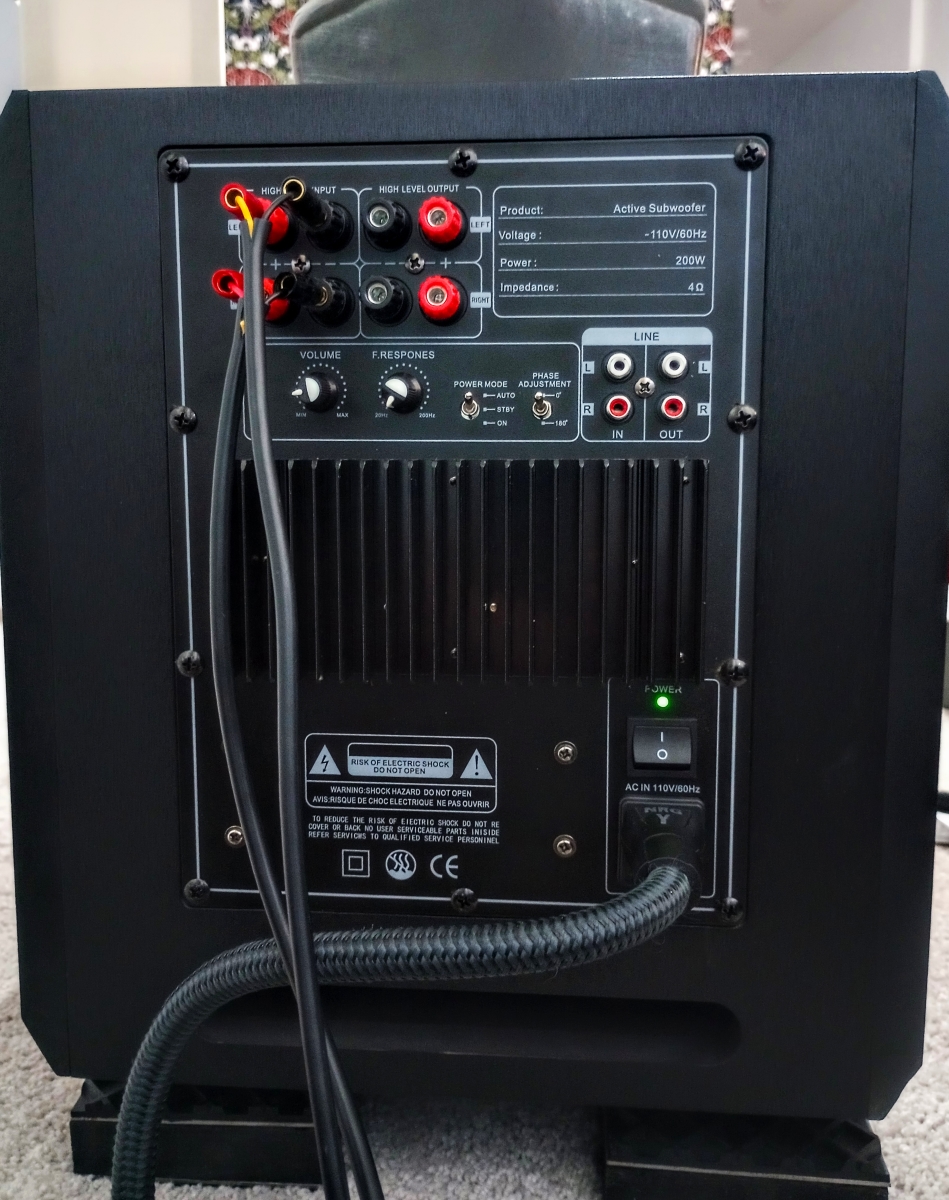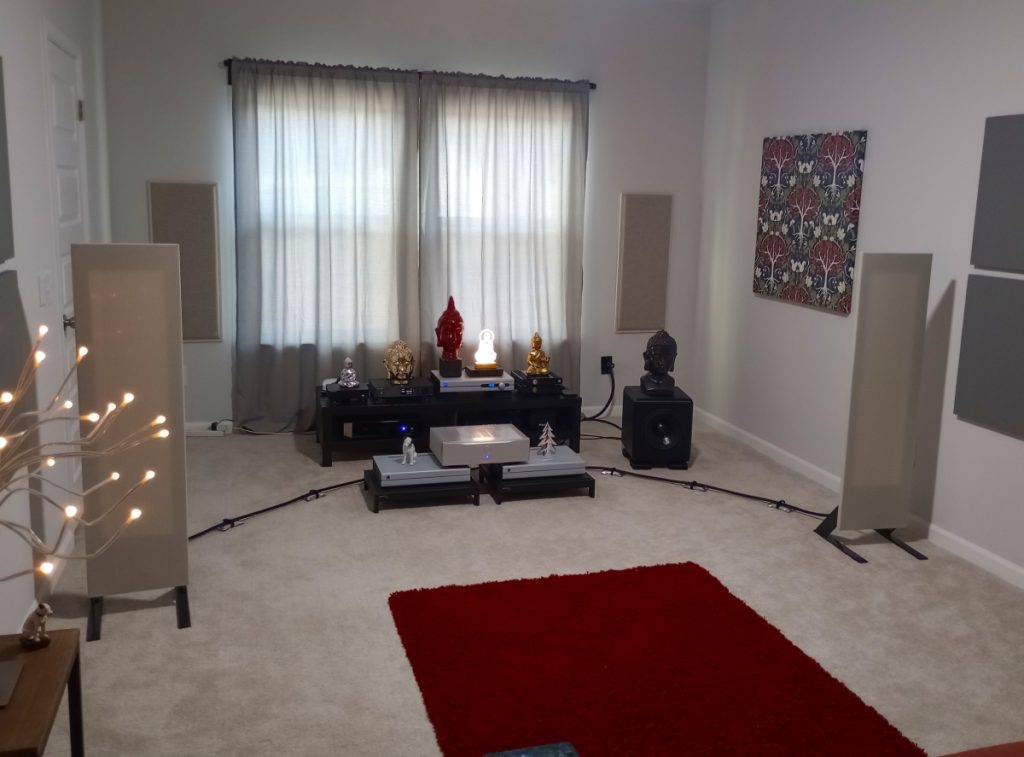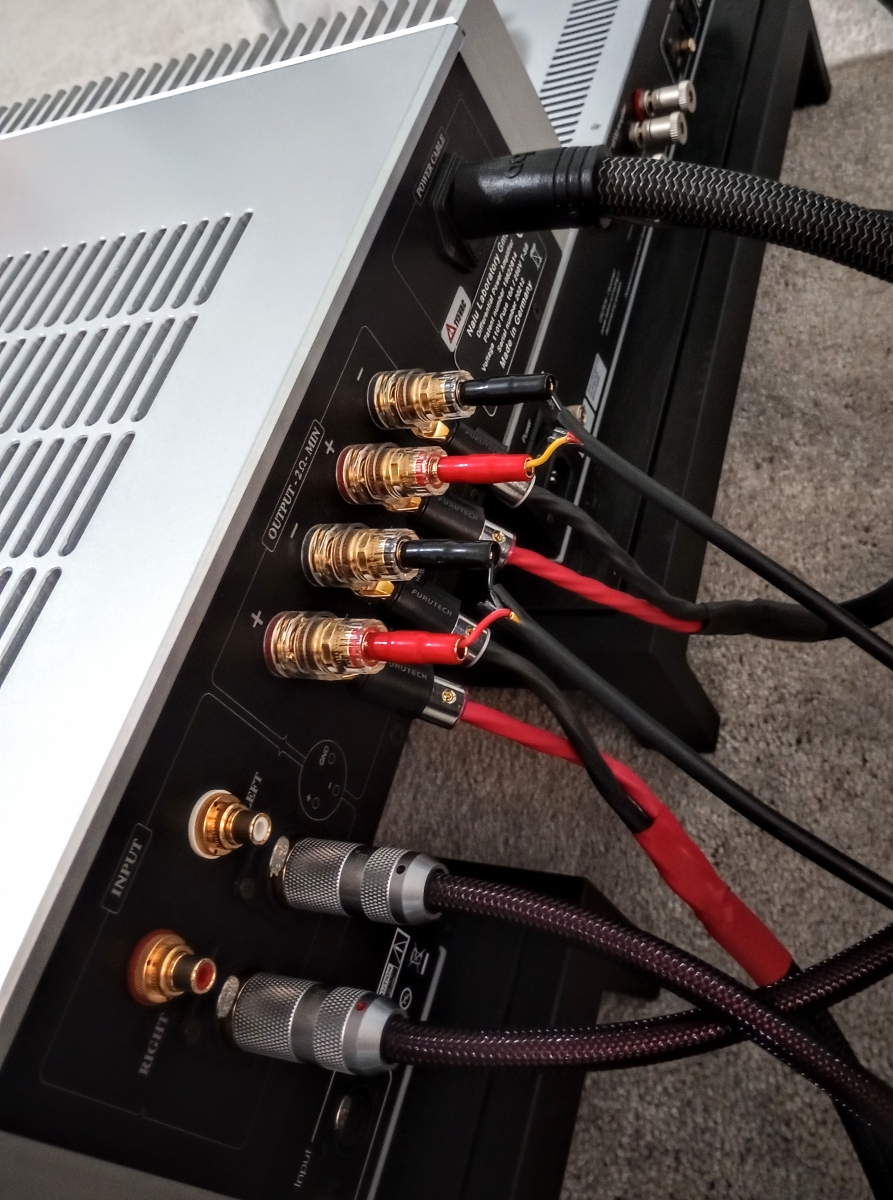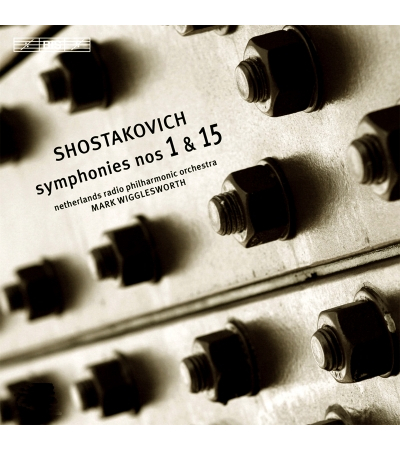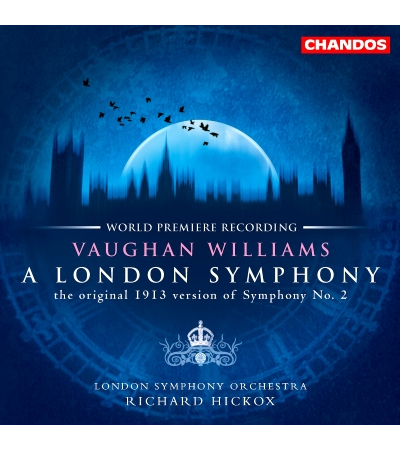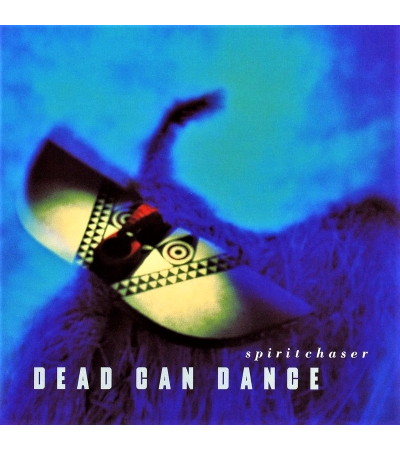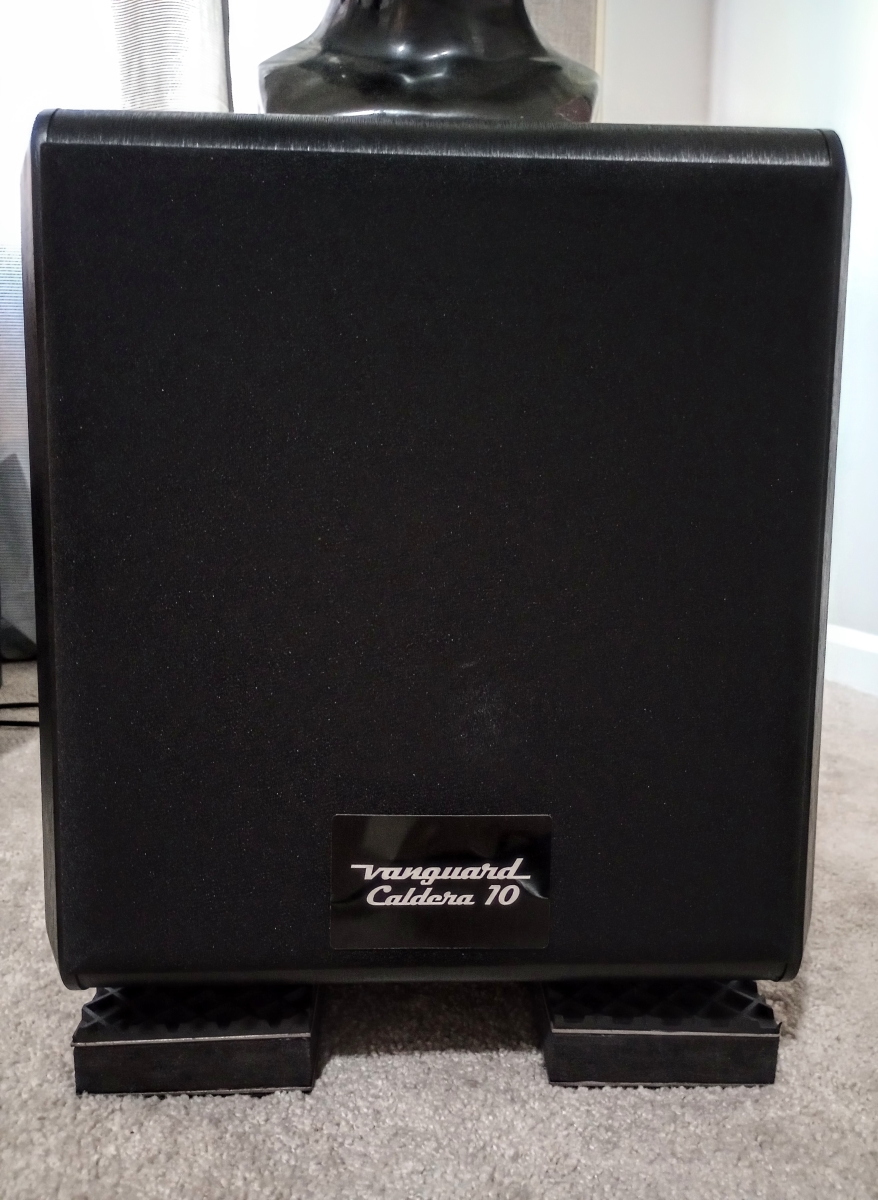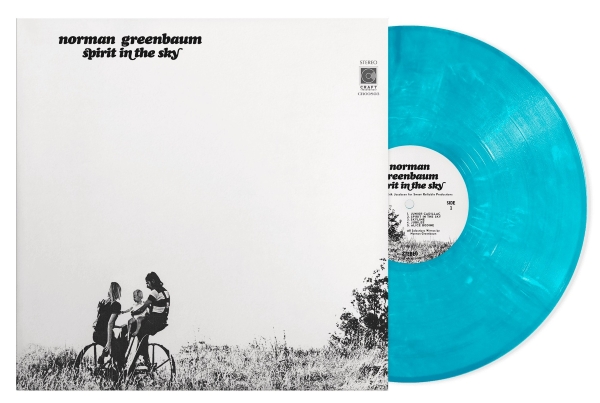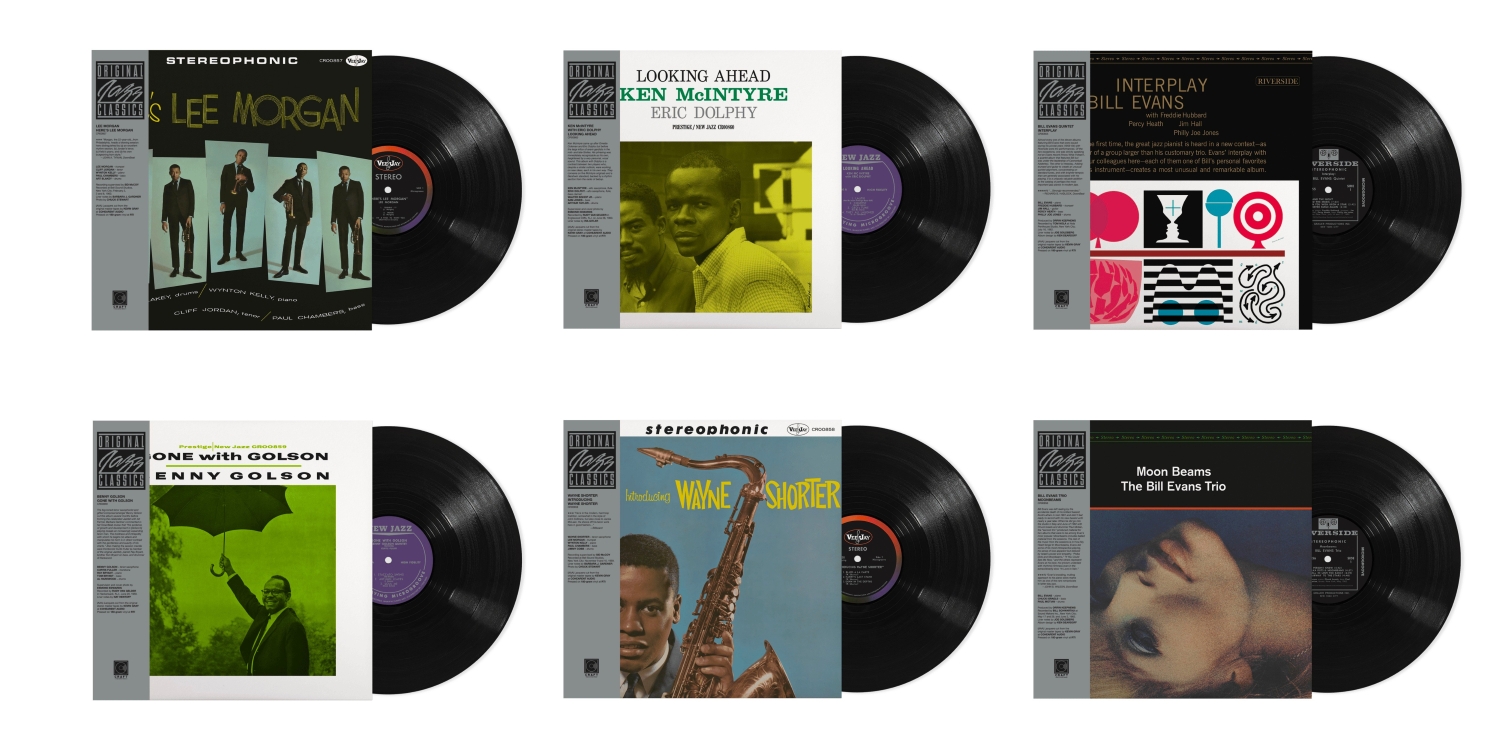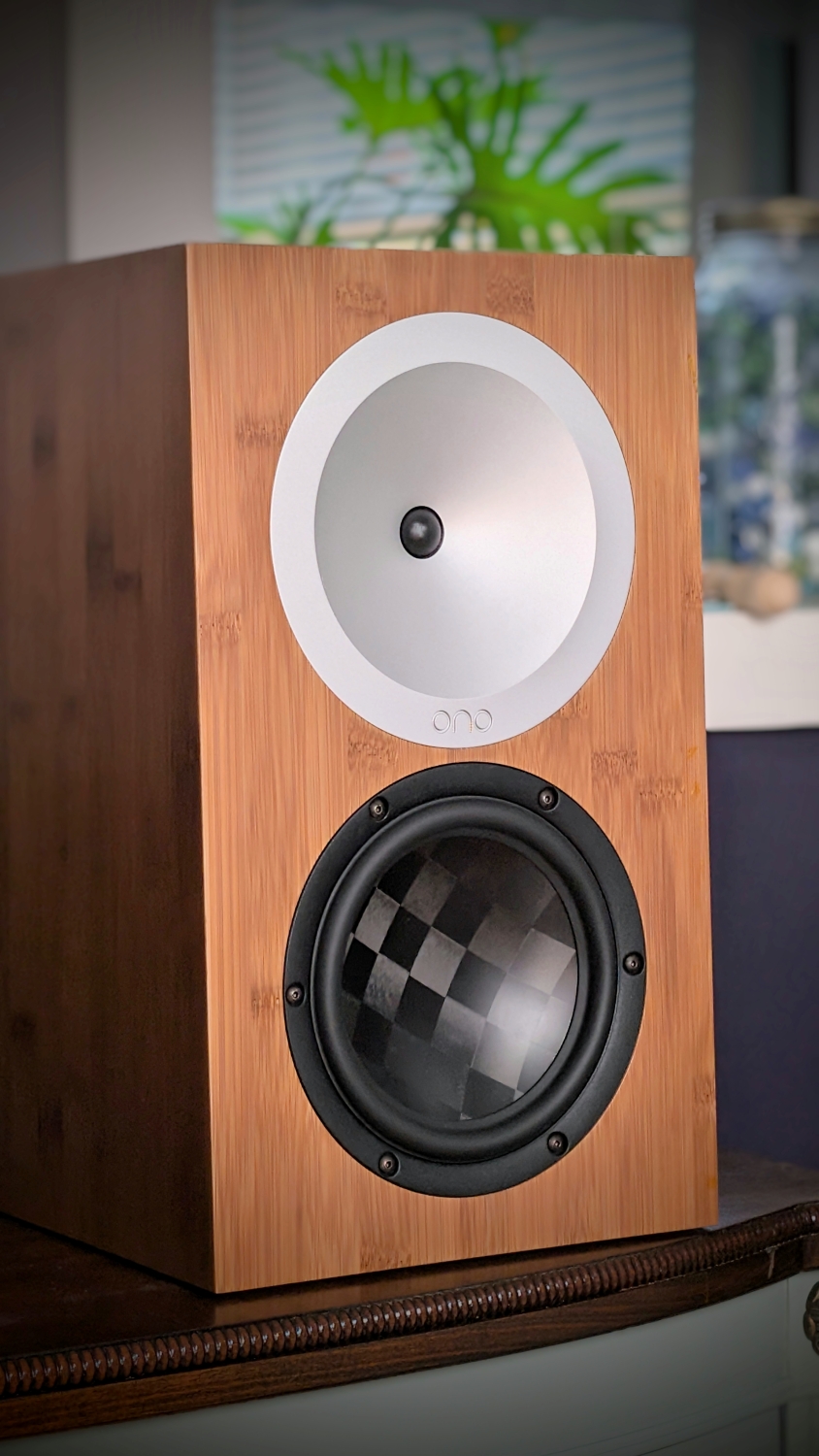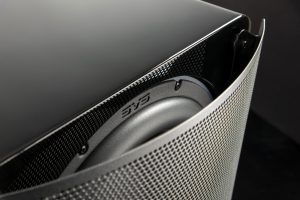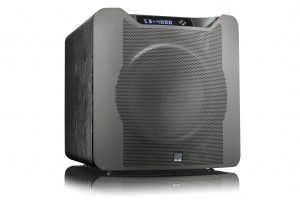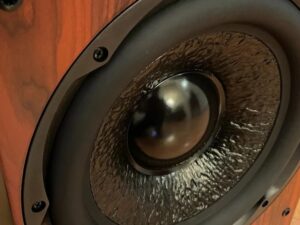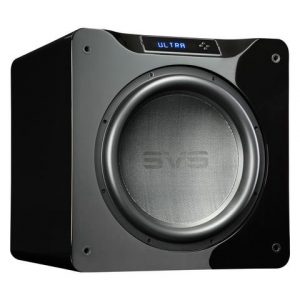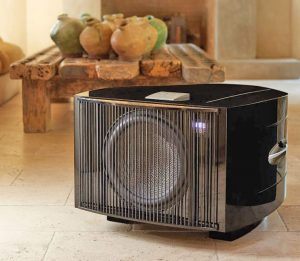Back in 1984, before all the cool old independent hi-fi shops started vanishing into oblivion, there was a nice older dealer in northwest Atlanta called High Fidelity SSS. The shop had McIntosh amps, JBL Hartsfields, and all kinds of vintage gear scattered about, along with one room that was stocked with more modern gear. The old guy who ran the shop, Lee Kramer, was a salt-of-the-earth type, who could tell I didn't have two nickels to rub together, but for whatever reason, took a liking to me. And would indulge me by allowing me to hang about and listen to great music on expensive gear I couldn't afford in my wildest dreams. In the more modern room, there was cool equipment too, including a device I'd never seen before: a subwoofer, from manufacturer AudioPro in Sweden. I'd gotten my first pair of Magneplanars a year or so earlier, and was beginning to realize that despite their many virtues, they were seriously lacking in bass. Getting a subwoofer had suddenly become priority one for me.
Three subwoofers and six pairs of Maggies later, I'd finally found what for me was the perfect sub: a REL T9. The REL was a UK-designed, Chinese made subwoofer that offered a very different experience from the other subs I'd owned: it produced shockingly musical and thunderously subterranean bass in a compact package. And for such a small format subwoofer, it seemingly had limitless power reserves, and blended seamlessly with the Magneplanars. It was, quite literally, an audio match made in heaven—that is, until it died a couple of weeks ago! In high-end audio, twelve years of perfect service is always a gift, but I still wasn't ready to assign the REL to the scrap heap. After reaching out to their North American distributor, considering the age of the unit and type of damage it apparently sustained, repair wasn't an option. Replacing the REL wasn't an endeavor I was quite prepared to undertake—I didn't even know where to start.
Vera-Fi Audio Comes to the Rescue!
I've been working with Mark Schifter of Vera-Fi Audio LLC on several recent projects; Mark and his brilliant team have created some astonishing products that punch far above their price class. Like the Vera-Link Bluetooth Wireless Streaming Amplifiers I reviewed late last year, which offered a ratio of performance-to-price that was unlike anything I've ever seen—or heard! The Vera-Links utilize a level of technology that seems impossible to believe at their meager price point; you can read my full review HERE for a glimpse into the artistry and excellence of Vera-Fi Audio.
I reached out to Mark the next day; I had a couple of review-related items I needed to follow up on. And I'd seen some advance information on a bargain-basement, $199 subwoofer Vera-Fi was getting very close to bringing to market, the Vanguard Caldera 10. The Caldera 10 is designed in the US, and manufactured in China; I have a lot of experience with Chinese-made equipment, and it can be exceptionally well-made. So in a moment of calculated desperation, I asked Mark about possibly getting a review unit. I had no illusions that the budget-friendly Caldera 10 sub would be able to perform at any kind of level approaching that of the recently deceased REL. It might, however, provide a valuable performance baseline for my explorations in finding a suitable replacement. Mark was as congenial as ever, and happy to send a review unit; he was almost giddy to hear my impressions of the new Caldera 10 sub. And convinced that I'd be awestruck by the Caldera 10's performance. Vera-Fi didn't even have the new sub on their website yet, so I couldn't see any specifications or information online, other than the handful of pictures I'd seen in a Facebook teaser.
Mark sent the Vanguard Caldera 10 subwoofer second day; when I saw the UPS notice announcing its arrival, it seemed to me to be somewhat lighter in weight (32lbs) than I was expecting. Mark and I had also chatted about other aspects of the Caldera 10; I mentioned that I'd been using a sub that utilized a speaker-level connection scheme, where the sub is directly connected to the amplifier speaker terminals. Mark assured me that the Caldera 10 had options for line level as well as speaker level, and that he was very pleased with the quality of the line level connections. He also assured me that I'd be very pleasantly surprised by the fit and finish of the Caldera 10, especially at its price point. And that they'd taken advantage of feedback they'd gotten from advance users in the field to make meaningful alterations to the design. He was very eager to hear my impressions!
The Vanguard Caldera 10 Subwoofer Arrives
When the Caldera 10 arrived, it was significantly larger, and had substantially more heft than I was expecting—getting it upstairs to my digital system room was a bit more of a chore than I had anticipated! It wasn't so much the weight, but the girth of the outer box, which was a bit unwieldy carrying up the stairs. It was packed exceptionally well, and my first impression after getting it out of the box was that it was definitely more handsome in person than in the few pictures I'd seen online. The cabinet is covered with a black-ash finished wood-grain vinyl veneer; the Caldera 10 presents a surprisingly elegant appearance with nicely rounded edges along the side and front panels. The fit and finish is definitely superb, and there's a small, removable black grill that covers the front-firing woofer. Out of the box, the Caldera 10 measures about 16" H x 13" W x 15" D—those measurements include the footers, woofer assembly, and connectors protruding from the case. It actually has a significantly larger woofer compartment than the REL sub did, with greater volume displacement.
While the shipping info from UPS listed the shipping weight as 32lbs, it seemed substantially heavier than that. Mark Schifter confirmed that the info was correct; the dead REL, while smaller than the Caldera 10, was much heavier, probably pushing forty-plus lbs. But I soon remembered that the REL's amp had a 20 pound (!) transformer that was so heavy and huge, it couldn't be attached to the plate amp, it was bolted to the inner cabinet. Take the transformer and the REL's external steel framework away, and the Caldera 10 probably is actually heavier than the REL!
The 10-inch front-firing woofer sports what appears to be a heavily-doped paper cone with a rubber surround, and there's a slotted rectangular port that runs most of the lower width of the sub's back panel and below the plate amplifier. Making the Vanguard Caldera 10 the first ported sub I've had in my system in probably 30 years! The connectors and controls are fairly well-organized; I would have liked for the output and crossover cutoff level controls to be somewhere other than directly below the speaker level inputs, but that's actually a very minor gripe. They're still very accessible, even with cables attached, so no real worries. The RCA connectors and speaker level connectors are a step up from the typical budget-type employed in a $199 subwoofer—I was actually impressed that Vera-Fi decided to use the kind of 5-way binding posts that are a cut above what's expected for a product like the Caldera 10. There's a 0/180 phase adjustment switch, and you can also set the Caldera 10 to constant on, standby, or auto on. And the amplifier plate features a full-sized IEC power input, so that you can be assured it's getting full current from the wall outlet, and can roll your own choice of aftermarket power cords, if you so desire.
The Caldera 10's plate amplifier is a Class A/B design that's rated to output 200 watts into 4 ohms; Vera-Fi didn't just use a cheap, off-the-shelf variety for their first sub! The Caldera 10's enclosure is tuned to 52Hz; Mark told me that they specifically chose a "real world" box tuning so that the Caldera 10 would provide performance that's on an equal footing in both strict audio applications and home theater use. The Caldera 10 features a -3 dB downpoint at 30Hz and a -6 dB downpoint at 27Hz; with the output level knob set to 12 o'clock and using the high-level speaker inputs with a 2.83 volts RMS signal, the sub measured a conservative SPL of 71 dB. All those specifications are surprisingly very similar to those of the dead REL, but of course, those are anechoic chamber response measurements. Designer Viet Nguyen mentioned that the Caldera 10's in-room bass response is about 6 dB higher once the sub is placed on the floor. And my PS Audio Stellar preamplifier has a maximum balanced output of 20 volts RMS—so getting the Caldera 10 to a more real-world, in-room output SPL should be no problem. You can see my own in-room SPL measurements a bit further down in the review.
Setup and Listening Results
I don't use a crossover with my LRS+ loudspeakers, I run them full-range; Magneplanar's new quasi-ribbon panel design can handle surprising input levels without distortion. I attached the same AudioQuest NRG Y3 power cord that was connected to the late REL sub to the Vanguard Caldera 10; it's in turn attached to an AudioQuest Niagara 3000 power conditioner. The MSRP of the AudioQuest AC power cord is higher than that of the Caldera 10 it's attached to! I decided to take Mark's advice and first connected the Caldera 10 using the line-level inputs; my PS Audio Stellar preamp has an available pair of line-level outputs, so no worries there. I had anticipated that the setup of the Caldera 10 might be a bit tricky; with most REL subs, you simply stick them exactly in your room's corner, so that was my first starting point—which proved to be totally wrong. That meant the usual crawling around on the floor, trying to determine by ear what was the best spot—that took about an hour. When I finally determined what I felt was the correct position—which is about three feet into the room, an equivalent distance from the side wall, and slightly angled towards the listening position—I returned to my listening position to continue with the setup process.
But that wasn't really working for me; the Caldera 10 seemed to be positioned correctly, but the sound quality was pretty horrible right out of the gate, and the sub didn't seem to integrate with the Maggies at all. I was playing a track from the new Native DSD Music DSD 512 download of Patricia Barber's album Modern Cool, "Company," which is essentially a trio of instruments that features Barber's voice and some incredibly dynamic interplay between the bass, drums, and trumpet. It's very rapidly become one of my new acid tests for system bass response—it's an absolute killer track, and Jim Anderson's recording captures the musicians with you-are-there realism. Regardless of how good the track was, the sub couldn't seem to keep up with the quickness of the Magneplanar's quasi-ribbon panels, and their usually liquid midrange seemed abnormally congested. I futzed about with the controls and tweaked the sub placement for about another hour and was getting nowhere.
At that point, I just stopped the music and sat there; that's where I noticed there was a pronounced buzz emanating from the sub. I shut it off and went downstairs, digging through more online information about line-level vs. speaker level connections, and came to the conclusion that perhaps I was experiencing an impedance mismatch between the preamp and the sub. I disconnected the line-level cables from my preamp and the sub, and I suddenly remembered that I had the 25-foot, high-level Speakon cable lying about that had been in use with the dead REL. By that point, it was midnight, and I made the executive decision that I no longer had any real need for keeping the cable at its current length. So I cut a pair of 8-foot lengths, terminated them with some gold banana connectors I had lying around, and created a new pair of high-level interconnects by about 1:30 am. I turned everything back on, made the connections with my newly created cables, and did a very cursory check of the system—my wife, Beth, had long since crashed out, so I didn't want to crank any music too loudly. The really good news was that the buzz was gone, and the bass seemed to blend much more copacetically with the Magneplanars.
The next morning, I played the same Patricia Barber tune I'd been playing the night before, and it still sounded too bass-heavy. With the line level interconnects, the bass level needed to be set to the halfway mark on the scale, but with further experimentation while using the speaker level connections, I was able to reduce it to just a shade beyond the one-quarter mark. And the sound snapped more into focus; it wasn't perfect, but it sounded a lot better. The bass still seemed excessive; with the Caldera 10 in the system, the floor and walls of my listening room shook like they never did with the REL. I realized at that point that I'd forgotten to place the Caldera 10 on the EVP footers from AV RoomService I normally have in place underneath any subwoofer. That really helped a lot, but the way the Caldera 10 was energizing the room was still beyond belief. I was listening at levels that were typical for me, and from where I was seated, the sound pressure levels seemed very normal to me. Regardless of all that, Beth kept texting me from downstairs, asking me if it was really necessary to shake the entire house!
I reached out to Norman Varney at AV RoomService, and he mentioned that if the sub was ported, it was probably moving a lot of air, that would contribute to the excessive floor and wall vibrations that the EVPs didn't seem to be taming. I walked over to the Caldera 10—at that point, I was playing a really bass-heavy track from the Dead Can Dance album Spiritchaser, "Song of the Stars," which opens with a long, sustained bass pedal intro. The sheer volume of air exiting the slotted port was literally like a hurricane, but the woofer cone was barely vibrating at all! Visually, the Caldera 10 was just sitting there, looking pretty serene—I held my hand to the surfaces of the subwoofer, and was shocked that there was no excessive vibration to be felt on any of the surfaces, they were only emanating from the woofer cone and from the slotted port. I have a Buddah bust statue that sits on the sub; it just sat there, motionless, as though the sub was turned off—the interior of the Caldera 10's cabinet must be heavily braced to endure this kind of punishment without a hiccup of any kind.
I then placed my hands against the room's walls and the floor, and the level of vibration was far beyond anything I'd ever experienced with the REL sub (though not in a bad way!). I continued to play a lot of acoustic bass from well-recorded jazz albums, like Cyrus Chestnut's Revelation (which is another great recording from Jim Anderson) to continue tweaking the baseline output level of the sub. At that point, buoyed by the already noteworthy improvements in the Caldera 10's sound quality, I basically threw down the gauntlet, and started playing the most ridiculously bass-heavy content from every corner of my music server. Including silly-loud subterranean bass tracks from groups like Depeche Mode, Yello, Peter Gabriel, Kraftwerk, and Metallica; the Caldera 10 never flinched—not once!
The pièce de résistance came when I played a pair of classical selections that will challenge many speaker systems and amplifiers. The first piece features the Second movement of Shostakovich's Symphony No. 1, from a recording by Mark Wigglesworth and the Netherlands Radio Philharmonic (BIS SACD). Near the end of the movement there's a crushing, percussion-heavy crescendo with pounding tympani and the crush of the full orchestra—played loudly (as it should be!) with the Caldera 10 in the system, it now sounds like the entire house is about to collapse! Oh yeah! I followed that performance with a track that has become my "amp killer" of sorts—Ralph Vaughan Williams's Symphony No. 2, the "London" symphony, Second movement, in a recording from Richard Hickox and the London Symphony Orchestra (Chandos SACD). I've actually blown up two amps and caused others to trigger their protection circuits playing this track! Near the end of the second movement, there's a rolling orchestral crescendo with thunderous tympani; the orchestra reaches a massive climax, then after a brief lull, there's another rolling crescendo on an even more massive scale. It's an exhilarating moment, and the Caldera 10 never broke a sweat, handling the massive transients with aplomb—wow, you can now color me really impressed! Mark Schifter had told me that it would probably take the Caldera 10's woofer about 50 hours to fully break in; at this rate, and after only just a few days, I think we're almost there!
Impressions Following Break-in and Final Setup
After achieving what I felt were sufficiently good results with the Caldera 10 over a period of about five days, and being very satisfied with the sub's position and in-room response, I took another listen to the Patricia Barber track "Company" from Modern Cool. Whereas my earliest impressions were strongly along the lines of "Dear God, this is absolutely awful!" the Caldera 10's 10-inch woofer was now sufficiently broken-in, had gotten more relaxed in its presentation, and now integrated with the Magneplanars nearly perfectly. I have no doubts that with more time, the integration between the two will be perfect! In a recent message, Mark Schifter confided to me that he'd talked with Wendell Diller at Magnepan over the years about creating a small sub that perfectly integrates with smaller Maggies—like my LRS+. The Caldera 10's low frequency cutoff integrates well with the LRS+ 50Hz low frequency extension, providing a very seamless musical presentation—and to my very great surprise, that's actually by Vera-Fi's design!
I think Mark Schifter and Viet Nguyen have totally achieved their goals for the Caldera 10—the now broken-in subwoofer presents bass that's musically tuneful and sufficiently deep, and its improved presentation allows Patricia Barber's vocals to proceed with the kind of clarity and expressiveness I was getting from my previous setup. The congestion and lack of musicality I was initially hearing with the Caldera 10 in the system was now completely gone. The transformation the Caldera 10 underwent in just a few days was nearly miraculous, and as the song progressed, the sub displayed the kind of impressive bass and musical transients I'd previously been getting from the REL. Remarkable, to say the very least!
I pulled out my trusty Rat Shack SPL meter and took a few measurements of my own, just for giggles. Remember, Mark's quoted SPL measurement of 71 dB with a 2.83 volt input was with the Caldera 10's output level knob set to the 12 o'clock (straight up) position. I put on a couple of crazy, bass-heavy tracks; Peter Gabriel's song "Down To Earth" from the soundtrack of the movie Wall-E, which features unbelievably subterranean deep bass content, and the aforementioned "Song of the Stars" from Spiritchaser by Dead Can Dance. With "reference" playback levels (that translates into "really loud!") measuring around 90-to-96 dBs at my listening position. Using the C-weighted response curve of the SPL meter, the Caldera 10 measured between 100-and-104 dBs at approximately one meter from the face of the woofer cone. From the back side of the Caldera 10, at approximately one meter from the slotted port, the SPL meter measured between 110-and-114 dBs—and this is with the sub's output level knob set at just over one-quarter of the output setting, or about 9 o'clock on the dial. That's beyond astonishing to me, and this is with zero audible distortions of any kind, and the woofer cone visually is almost motionless! The Buddha bust that rests on the top of the Caldera 10 was perfectly motionless, and didn't budge a millimeter—that alone was astonishing, considering how my 13' W x 21' L x 9' H room (almost 2500 cubic feet) was energized by the small sub. Again, holding my hand to the Caldera 10 and the Buddha only revealed a minimum of vibration. Broken record, I know, but simply astonishing!
Final Thoughts
Sequence of events: REL subwoofer dies, resulting in worst day of the week. Vanguard Caldera 10 shows up, and on day one, can things possibly get any worse? Day five following Caldera 10's arrival: Best day of the year! When I reached out to Mark Schifter to try and sell him on a review of the Caldera 10, my motives were nefarious at best—I needed a sub to tide me over during the arduous process of finding a replacement for the REL. Hopefully, I could cleverly disguise my true intentions in the form of a new product review.
I never, never dreamed in a million years that the Vanguard Caldera 10 is literally the giant killer that it is; yes, I know we're only five days into the Caldera 10 experience, but in my professional view, it will only get better from here. And as great as a single Caldera 10 has been for me, getting two of them makes such perfect sense, both from a financial and audiophile standpoint. Running dual subs will definitely help smooth out any in-room bass anomalies, and would lead to a significant uptick in system performance. At $199 for a single Caldera 10, your decision is a no-brainer; getting two of them at $199 each makes your decision completely idiot-proof.
The Good: Seriously? Re-read this review! They say there's no free lunch in high-end audio, but with the Vanguard Caldera 10, you get an appetizer, lunch, dessert, and a craft beer. All for $199—it doesn't get any better!
The Bad: I'm not crazy about the metal placket on the face of the removable grill—it's a bit large. That said, I do all my listening with the speaker grills removed anyway, so it's basically a non-issue.
How is it that Mark Schifter and Vera-Fi are able to manufacture and sell the Vanguard Caldera 10 for $199? I'm beyond baffled, as the sub it's replacing (yes—it's definitely a keeper!) sold new 12 years ago for $1k, and would probably sell for close to twice that today. I'm blown away—yet again—by another of Mark's products: both Mark and his collaborator Viet Nguyen are definitely on their A-game. Well done! The Vanguard Caldera 10 subwoofer comes very highly recommended!
Vanguard Caldera 10 Powered Subwoofer
Retail: $199
Vera-Fi Audio
All photos courtesy of Vera-Fi and the author




